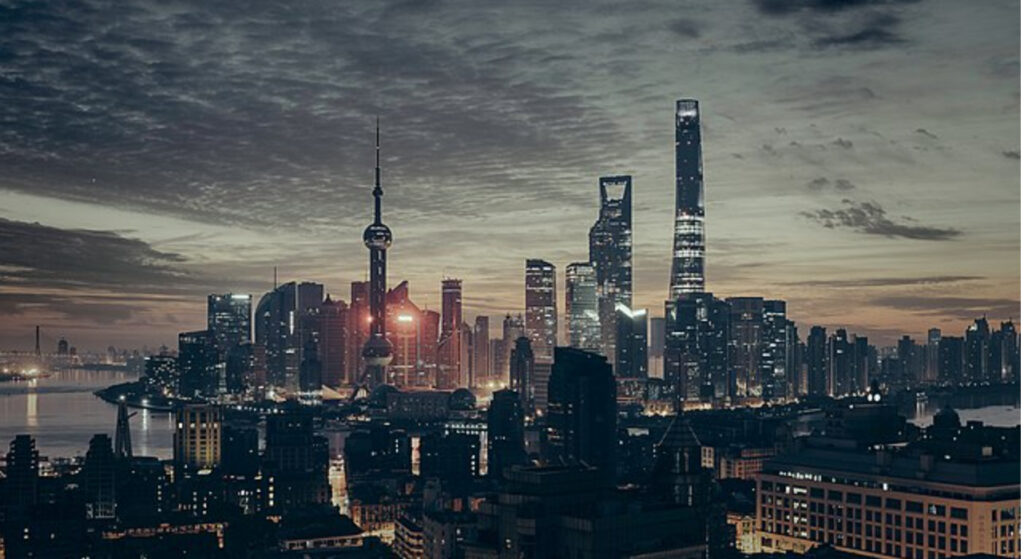SAN FRANCISCO — Imagine a futuristic city where robots prevail. Since the advent of imperialism, this futuristic and otherly view has often served as the popularized Western conception of Asia. This concept is known as Techno-Orientalism, a phenomenon that primarily dominates discourse surrounding media portrayals of East Asia.
According to journalist George Yang in Wired Magazine, Techno-Orientalism, which creates an ideology of the Asian “Other,” rests on Western logic of the East as a technological threat to the world. With Beijing’s technological rise in an increasingly globalized world, Techno-Orientalist frameworks have now become fundamental to specifically describing China.
Plan A Magazine’s Lily Luo writes that the term “Techno-Orientalism” was originally coined by Asian scholars like David Roh, Greta Niu and Betsy Huang. These scholars perceived Techno-Orientalism as the projection of historical Orientalism, or what Khan Academy’s Nancy Demerdash describes as the “conception of an ‘Orient’ that was rooted in incivility.”
Under the futuristic gaze of Techno-Orientalism, East Asians are not only conceived of as a racialized source of fear, but also a source of technological fear. In other words, the technological advancements of East Asian countries were perceived as a threat to the global order.
Today, Techno-Orientalism is most evident in the Western media’s coverage of China, which often reflects what Yang describes as “Western anxieties about the East.”
“China’s dystopian tech could be contagious,” reads a 2018 headline from The Atlantic. The word “contagious” implicitly projects the notion that China’s technology is somehow diseased, evoking imagery of illness and a plague — racialized elements that Yang states were formerly attributed to Chinese immigrants building the United States’s Transcontinental Railroad back in the 19th century.
The article goes on to describe China’s “social credit” system and its effects as a method of “social control” with “teeth.” The element of “teeth” provokes a more physical understanding of China’s technological capabilities. Instead of directly analyzing the mechanics of the system, the article employs metaphors that conjure up negative connotations of fear and violence.
Another headline for a 2019 article in The American Conservative demonstrates a similar concept: “George Orwell’s Dystopian Nightmare in China.” The featured image displays a large cartoon of Chinese President Xi Jinping looming over ordinary citizens and handing them numbers intended to dictate their identities. The article cites the Orwellian vision of the world — particularly Social Psychologist Erich Fromm’s afternote about the dangers of men becoming machines — implying that this is what China has become.
The issue is not endemic to a few articles or a handful of media organizations and publications. In a 2018 op-ed in Bloomberg, Cathy O’Neil argues that the United States must take an active stand against the surveillance state with the headline: “Want to See Your Dystopian Future? Look at China.” For The New York Post, a headline reads: “China’s ‘social credit’ system is a dystopian nightmare.”
This angled coverage of China, unintentional or not, falls prey to a certain dehumanizing rhetoric in which the Chinese people are viewed as constant victims of a dystopian, futuristic state. In the process of shedding light on how China’s technological advancements may strip humanity away from Chinese citizens, an important topic that deserves coverage and criticism, Western media coverage paradoxically falls victim to the same trope: implying that Chinese people are mindless robots at the mercy of a technological villain.
It is necessary, though, to acknowledge that criticism of Techno-Orientalist sentiments pervasive in Western media is not based on the assumption that such articles are not credible. In fact, it is because these articles are so well-written and well-researched on a topic that merits global attention that it becomes even more essential to understand how racialized ideals manifest in complex ways within contemporary media discourse — even in the small ways, like headlines, images and adjectives.
This problem becomes cyclical, especially because so many articles cite the ideas mentioned by others. This may explain how the media tends to exacerbate Sinophobia. Often, Western media’s hegemonic mindset regarding Beijing prizes competition over collaboration. This undermines a positive diplomatic relationship between the United States and China and, more critically, a nuanced American understanding of Chinese people, culture and values.
When evaluating how Techno-Orientalism has shaped internalized conceptions of China, it is critical to be rhetorically careful and to distinguish between hard evidence and Western interpretations of that evidence. These interpretations appear to be motivated by hegemonic fears of Asian countries achieving unprecedented progress and subverting colonialist paradigms.
Alternatively, these interpretations may be real fear rooted in the use of technology to oppress certain liberties — a genuine concern. However, journalists must be careful in examining their assumptions and biases. When writing about China, they should consider how certain language may benefit discourse on the country or proliferate harmful stereotypes.
It may even be worth thinking about how the media can provide a counternarrative to Techno-Orientalist ideologies. Instead of characterizing China’s technological rise as dangerous and fear-mongering, journalists and media experts could explain the original reasoning behind such technological policy measures.
The Qiao Collective, for example, is an organization that is a staunch defender of China against “Western aggression.” While not without its controversies and criticism, the volunteer-run media site features articles intended to provide a more nuanced, humanizing perspective on China. Articles on the website strategically deconstruct stereotypes and misconceptions about China from raising awareness of China’s internationalist solidarity during the coronavirus pandemic to more personal reflections on the connections between China’s political thought and anti-racist thinking.
Ultimately, addressing biases in media coverage can enhance not only the quality of reporting, but also address the ways in which reporting contributes to political misconceptions of entire nationalities, cultures and values.







